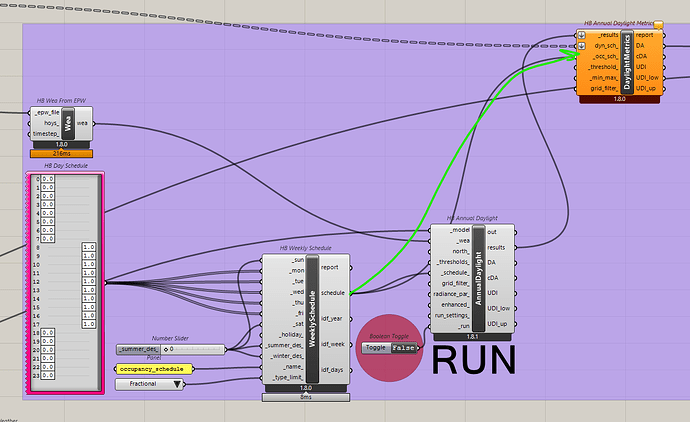Hi everyone,
I’m currently working on a daylight simulation using a Dynamic Aperture Group in Ladybug Tools. I am working with Ladybug version 1.8 and Pollination version 1.52.10
I’ve created a room from faces and set up two different façade states:
- state0: blinds at 0°
- state1: blinds at 45°
However, when I run the Annual Daylight recipe with these states, the simulation fails to proceed. Interestingly, if I run the same setup without any states (i.e., with a static façade), everything works as expected.
(I included a screenshot with the error from the setup)
I also have a related question:
Is it possible to run a point-in-time view-based study with different aperture states? Has anyone successfully done this, or are there known limitations?
Has anyone encountered similar issues with dynamic aperture groups? I have read the posts below, but honestly I am having trouble following them.
Could the problem be related to how I’ve defined the states, or perhaps something that happens after setting up the sensor grid?
I’ve attached my working file for reference. Any insights, suggestions, or troubleshooting tips would be greatly appreciated!
annual_daylight_dynamic_blinds.gh (156.5 KB)
Thank you in advance for your help,
Vicky



